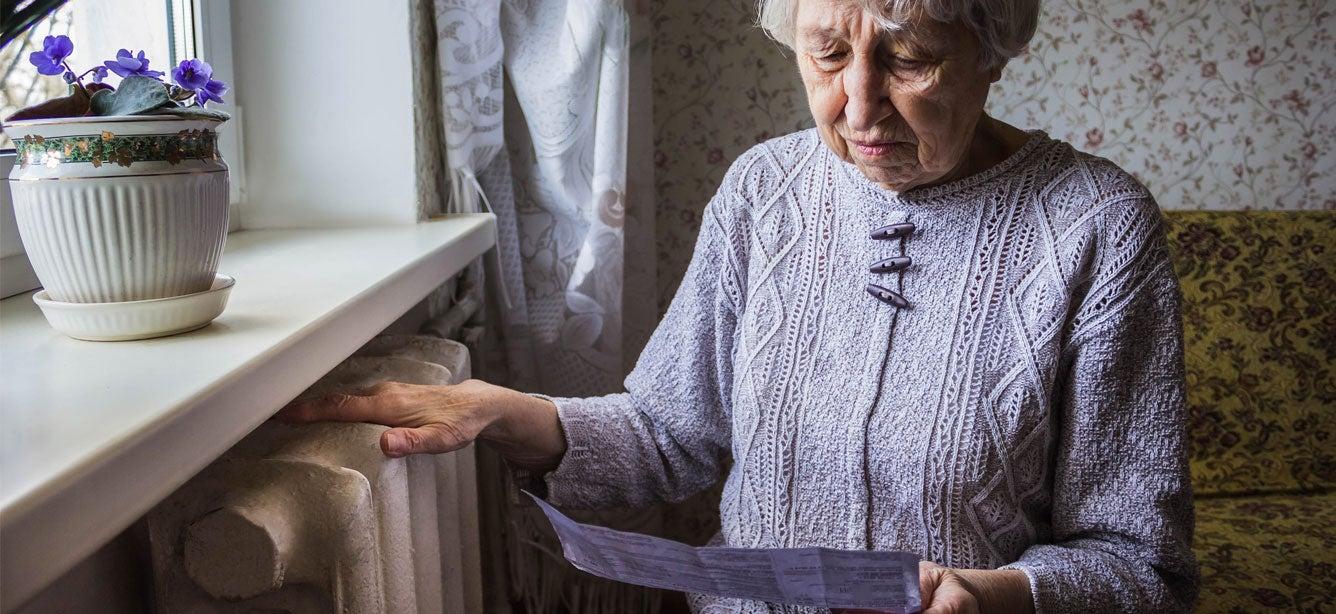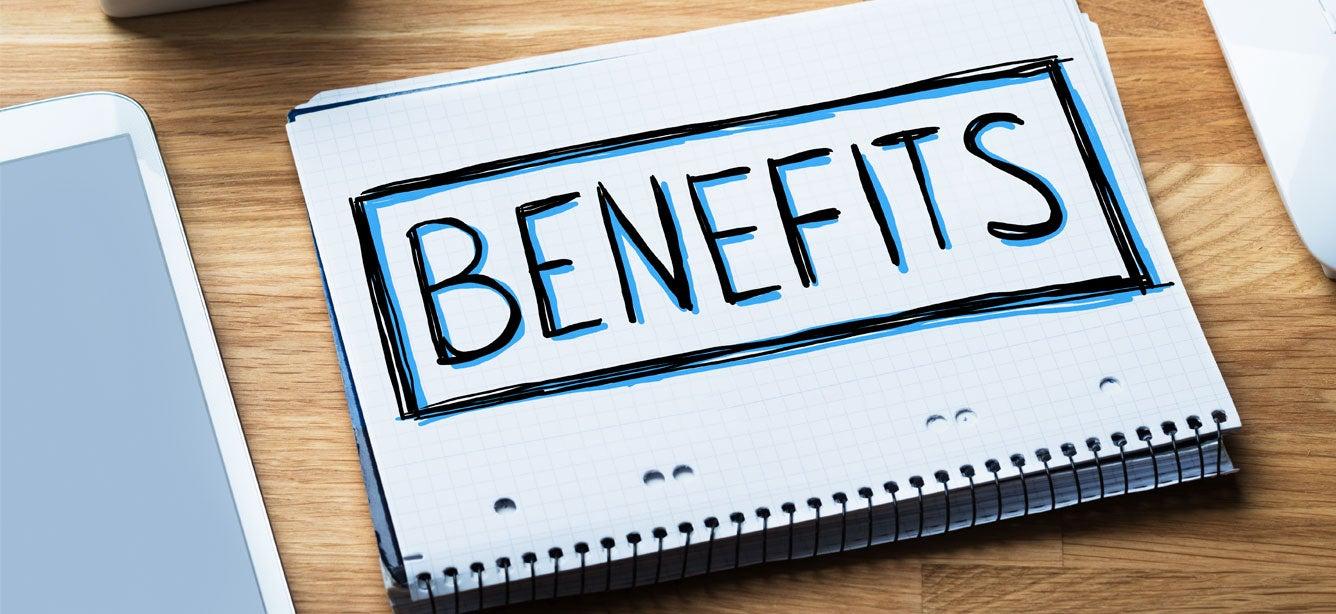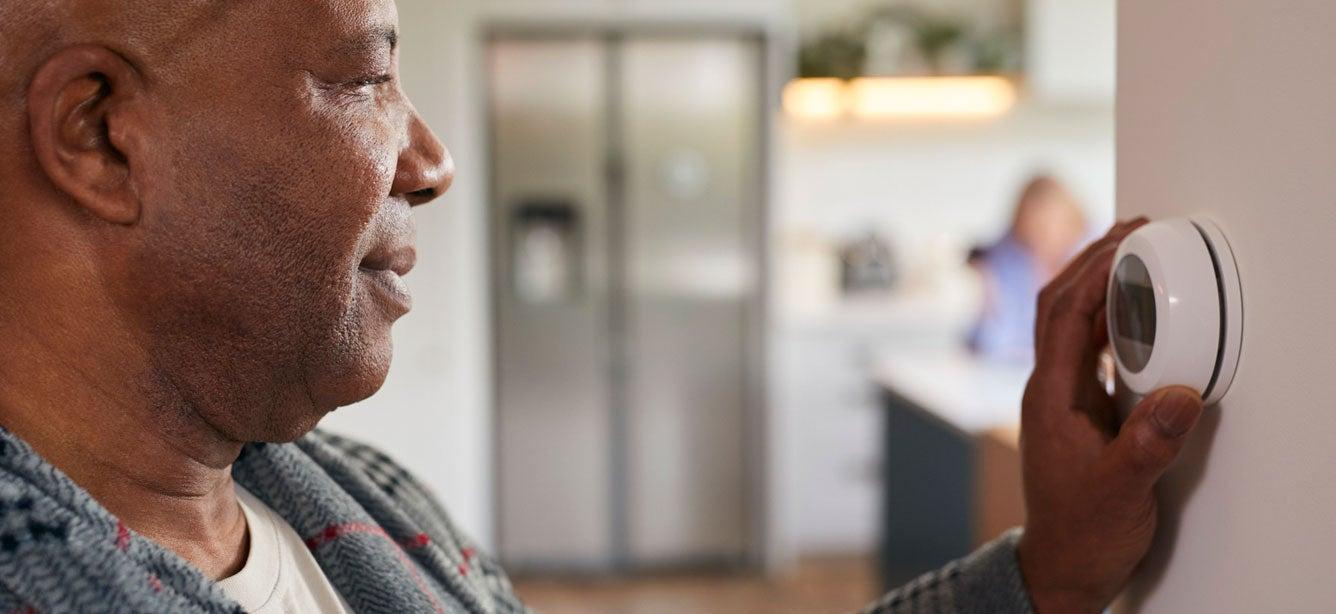Energy Assistance Programs Beyond LIHEAP: Help for Low-Income Households
5 min read

In this time of skyrocketing costs, far too many people in the U.S. find themselves grappling with "energy poverty": forced to make difficult choices about maintaining a safe temperature in their homes or meeting their other basic needs. This is particularly true for people and families who live on low or fixed incomes and simply don’t have enough money to pay for daily living expenses.
Ms. Praylow, who lives in New Jersey, knows this all too well. With only $725 per month in disability income, she could barely pay for her rent-controlled apartment, let alone buy groceries or keep the lights on.
“She had been surviving on food provided by her local pantry, but those provisions were limited,” explained her case worker at HOPES Community Action Partnership, an NCOA partner in Hoboken. “Fortunately, after screening, we determined she would be eligible for LIHEAP.”
You've likely heard of the Low Income Home Energy Assistance Program (LIHEAP), which is a federally funded benefit administered by the U.S. Department of Health and Human Services’ Administration for Children and Families. Often, this is the first line of defense for people who can’t afford their utilities, like Ms. Praylow. And the impact is measurable: after qualifying for LIHEAP assistance, Ms. Praylow received a $200 emergency payment and gets a monthly credit on her PSE&G bill, too.
But since it's a block grant program, LIHEAP's reach is limited. Once the funds are exhausted, the program closes to applicants until the next appropriations cycle—which leaves many people who otherwise would qualify literally out in the cold.
But there’s better news: for your eligible clients, there are several other programs that can help save money on utilities. These include weatherization assistance; ratepayer-funded programs; state and local financial assistance; and privately-funded fuel assistance programs.
We cover them allbelow.
What is weatherization assistance?
The U.S. Department of Energy (DOE) Weatherization Assistance Program provides grants to states, territories, and some Native American tribes to improve home energy efficiency for qualifying households with low incomes. Each individual state sets its own eligibility guidelines and benefits determinations.1
Under DOE guidelines, any household at or below 200% of the Federal Poverty Guidelines, or that receives Supplemental Security Income (SSI) is eligible for weatherization assistance.2 These guidelines also mandate that states must give priority eligibility to adults age 60+, people with disabilities, families with children, and families with high energy burden or high energy use.2 States also may choose to extend WAP eligibility to households who do or would qualify for LIHEAP under teh 60% of state median income rule.2
Once a household is approved for WAP, someone from their local weatherization agency will perform a home energy audit.1 This qualified professional will assess the home's energy use, including performing an analysis of heating and cooling bills; test how much outside air enters the home; and inspect all energy equipment such as furnaces, air conditioning units, boilers, electric heaters, and others.
Following the audit, this professional will explain how crews will complete the weatherization work, which may include installing insulation, sealing windows and doors, and upgrading heating and cooling systems. (WAP does not cover new roofing, siding, or similar structural improvements.) Each household is eligible for up to $6,500 in weatherization benefits at no cost to them.3 Workers typically complete these improvements in a day or two, which the DOE estimates saves households an average of $372 annually (expressed in 2022 dollars) on their heating and cooling costs.1 Find your state weatherization assistance program.
What are ratepayer-funded programs and how can they help older adults?
Utility ratepayer-funded programs provide bill payment assistance or energy efficiency services to low-income households. These programs are funded through fees assessed on all or some commercial, industrial, and residential consumers. These fees are sometimes called public goods surcharges, system benefits charges, public benefits fees, universal service fees, universal energy charges, and meter charges, among other similar terms.
In some states, these ratepayer-funded programs are administered by a state agency; typically, the same one that administers LIHEAP and weatherization assistance. In other states, utility companies themselves administer the program. Usually, the state regulatory commission oversees both funding mechanisms.
Ratepayer-funded programs often complement LIHEAP assistance for low-income families. Eligibility requirements vary, so clients should check with the plan in their area for more information and how to apply.
Are there state and local funds that can help older adults?
Some states and counties use General Assistance, emergency assistance, local tax revenues, or similar funds to supplement federal LIHEAP funding. These funds may help low-income families pay for fuel, utilities, furnace repairs, or other expenses; some also help households avoid utility shut-offs during high-peak summer and winter months. States that administer such programs are eligible to receive incentives from the federal government for leveraging non-federal resources for energy assistance, thereby increasing the resources they have to give.
Eligibility criteria vary by state; in some states, applicants must be experiencing a financial crisis or emergency situation to receive help. State and local energy assistance funding is usually available through the same office that administers LIHEAP. Find your state’s energy assistance director.
How do private fuel funds work?
Private fuel funds raise corporate or private monies to support fuel provisions for low-income households. Most of these funds involve a working relationship between the utility company and one or more social service organizations, and they maintain their own eligibility guidelines. Fuel funds often help families in crisis or those who otherwise might not be able to take advantage of LIHEAP, enabling them to pay their energy bills or purchase fuel oil, wood, and coal.
To find if your area offers a fuel fund, contact your state’s energy department.
Sources
1. U.S. Department of Energy Office of State and Community Energy Programs. Weatherization Assistance Program. Found on the Internet at https://www.energy.gov/sites/default/files/2023-08/2023-WAP-Fact-Sheet.pdf
2. U.S. Department of Energy Office of State and Community Energy Programs. How to Apply for Weatherization Assistance. Found on the internet at https://www.energy.gov/scep/wap/how-apply-weatherization-assistance
3. U.S. Department of Energy Office of State and Community Energy Programs. Average Cost Per Dwelling Unit. Found on the internet at https://www.energy.gov/scep/wap/average-cost-dwelling-unit



